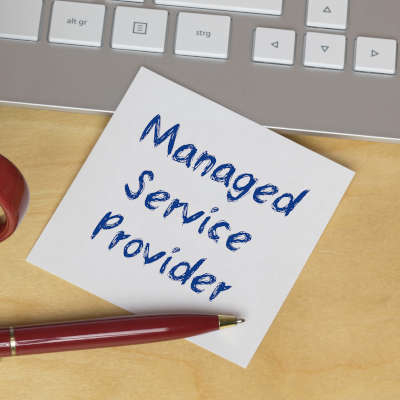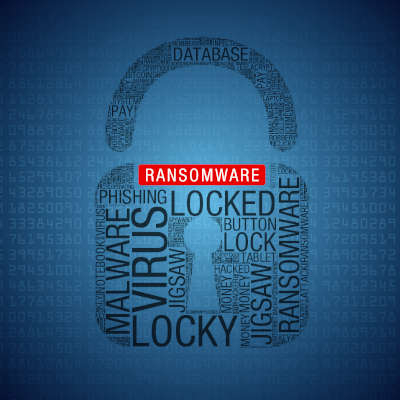Regardless of what your business does, there is a good chance that it relies pretty heavily on technology. When that technology falters, so does your business. Sure, this might be for a couple hours at a time, but it all adds up and has a major impact on the success of your business. Many organizations have outsourced their IT support and management, but could benefit from a more proactive approach than the one they currently employ. Today, we will take a look at some of the priorities that businesses should consider when choosing an outsourced IT provider. Proactive Management One of the most crucial elements of a good managed IT services platform is the proactive approach to management. This is due to the fact that by mitigating downtime, an organization will be able to function more efficiently. When we talk about proactive management, we are mainly talking about constant remote monitoring of a network and infrastructure. While some outsourcers will just remotely fix problems that an organization reports, a managed IT services provider will continually monitor the network and infrastructure and use automation to ensure that all of a business’ IT is running smoothly. The whole strategy is to keep downtime to a minimum through conscientious care of the hardware and network using cutting-edge tools designed to automate many of the countless tasks that are needed to do so. The best outsourced IT services will absolutely include proactive monitoring. Backup and Disaster Recovery Sometimes when a business outsources their IT support, they are left to find their own backup system. This can create unnecessary costs, as most managed IT service providers (MSPs) make a point to mention that their backup and disaster recovery platform is central to their offering; and why not? Controlling your data is effectively having control over one of your business’ best assets. A well-functioning BDR should have the ability to backup all assigned data systems incrementally. That way the backup gets as much of your work saved as possible, protecting your business from data loss brought on by any issue, including ransomware, natural disaster, or simple user error. Security Consulting The traditional outsourced IT or break/fix vendor would never consider proactively helping a business avoid the litany of security threats that are out there today. Their business model suggests as much. With an MSP, however, your network’s security is paramount to their ability to be profitable. How’s that? The more problems you have with your network and infrastructure the more time and effort they need to take to ensure your IT is running as promised. As a result, for the MSP to succeed, your business needs to succeed. The IT technicians that work in managed IT services are typically some of the most proficient technicians in your area. They can lend a great deal of knowledge and expertise to keep your business technology assets secure and running as intended. This includes security for your network and infrastructure, your mobile strategies, and even your cloud infrastructure and resources. Patch Management Another proactive measure that a good MSP will deliver is patch management. Most of your supported software continuously releases patches to keep it from being a pathway for infiltration from nefarious outside entities. A good IT services provider will ensure that your software is not only monitored, […]
Adobe Flash, once one of the most utilized pieces of software on the Internet is being retired by the software giant. Support will stop on December 31, 2020 and like any other piece of retired software, you should remove it from any systems you have that still run it.
If you’re seeking out an IT resource to assist your business in maintaining its all-important technology resources, you’re almost certainly seeking out the option that will give you the greatest return on your investment in terms of value. There is no denying that we are biased in our opinion, but that doesn’t change the fact that—dollar for dollar—the investment you make into managed services will always be the best choice.
Most people like new technology, whether it is a lamp shaped like the moon, a new video game console, or just a gadget that may improve their life a little bit. We looked around to try and find some business-esque technology the professional would be able to use in their office (or home office). Let’s take a look at them now:
There’s no denying that marketing is a big deal for smartphone manufacturers. They spend a lion’s share of their money pushing one or two devices on the public, when they build many more that sell as well or better. The thing is, not everyone has $1,000-to-$2,000 to drop on a cellphone every couple of years. To wrap up our look at the smartphone market, we thought we’d introduce you to some phones that won’t bust your budget and that can still provide users some value.
Working from home—especially for an extended period, as many have—can take its toll on anyone. Just think about it: instead of the home being a place of relative sanctuary that your employees can retreat to after the workday is over, the home has become just another place for work to be done. This quite understandably isn’t healthy, so it becomes important that your team members are able to separate their work life from their home life.
With so many people working from home right now, businesses have managed to keep their operations going somewhat successfully by using the remote solutions that are available today. While it is fortunate that today’s technology enables businesses to do so, the importance of cybersecurity cannot be understated as remote work is implemented.
Last week we explored the flagship smartphones that are on the market right now. Today, we wanted to look at some different devices. These devices carry the price tag of a flagship (or cost more), but don’t necessarily have the specs that you would expect from devices priced in that area. They explore new form factors, or in some cases, older form factors. Let’s briefly discuss four innovative new devices.
While loaning out your mobile device probably isn’t something you’re particularly keen to do right now, this may have been the case even before there were health concerns involved. After all, your phone really is just a little package of your personal data. What you may not have known, however, is that Android has had a feature—Android Guest Mode—that can help protect you since Android 5.0 Lollipop came out in 2014.
We haven’t exactly been shy about sharing our recommendation that a ransomware demand should never be met with payment, but there is now an even more impactful reason not to. This deterrent comes courtesy of the United States Treasury Department, which has released a statement informing businesses of potential fines as retribution for doing so.










